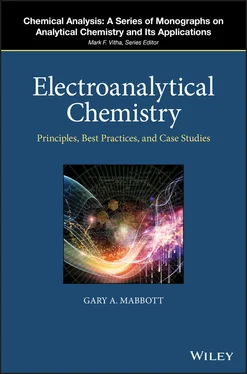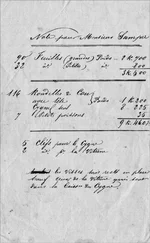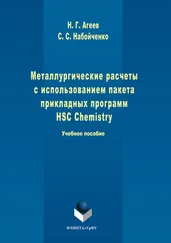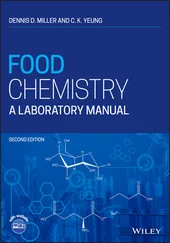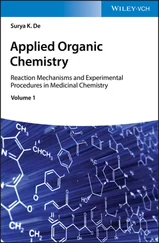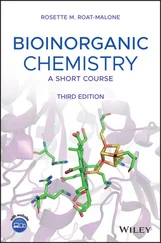Before launching into the principles of electrochemistry, it is appropriate to say a word about the structure of this book. Chapter summaries appear at the beginning of each chapter in the form of an overview. Unlike reading a novel, here it is helpful for you to know the plot in advance. It helps you to know what to take away from the story. It is worthwhile to read the overview both before and after reading the other sections of the chapter. This book is aimed at students of instrumental analysis, but it is also intended to be a solid introduction to electroanalytical principles for any professional scientist. A lot of care has gone into explaining physical mechanisms and underlying concepts. Recent developments leading to new and interesting methods with better performance characteristics and a wide range of applications are described in most chapters. However, there is much more material than can be reasonably absorbed during a typical two‐to‐three‐week unit of a college instrumental analysis course. Therefore, in addition to summarizing the major ideas, these chapter briefings tell you what sections to read, if time is short.
This first chapter is a bit different. It serves as an introduction to basic electrical phenomena and should be read in its entirety. Among the important ideas discussed in this chapter are a few definitions. The term “voltage” refers to the electrical potential energy of a charged particle. It is a measure of the force of attraction or repulsion on a single charged particle by the local density of charges in the neighborhood. The density of charges in the earth itself is thought to be reasonably constant and, as such, provides a local reference point for electrical energy. Instruments are often attached to a conductor in contact with the earth. This reference point is often referred to as “ground,” and it is considered to be a point representing 0 V.
One volt equals one joule per coulomb of charge. The charge on a mole of electrons is 9.6485 x 10 4C/mol. This number shows up in a lot of electrochemical relationships and is called the Faraday, F , after the nineteenth‐century scientist, Michael Faraday. Faraday established the relationship between charge, Q , transferred in an electrochemical reaction, such as the reduction of silver ions to silver metal, and the number of moles of reactant, N . This is Faraday's law: Q = nFN , where n is the number of moles of electrons transferred per mole of reactant. Another important concept is the free energy, Δ G , that drives an electrochemical reaction. The free energy of an electrochemical system is proportional to the voltage, E , and is a measurable quantity, Δ G = − nFE .
Electrical current is the movement of charge and is analogous to current in a river. While a river's current is measured in the volume flow rate of the water, electrical current is measured in amperes. One ampere is equivalent to a coulomb of charge moving past a given point per second. Electrons carry charge in electrical circuits. Ions carry charge in solution. Although electrons are negatively charged, current is defined as though positive charges are moving in a circuit. The direction of the current, then, is defined as movement of charge from a higher potential to a lower potential.
Electrochemical experiments are performed in containers called cells in which two or more electrodes connect the cell to an outside electrical circuit that allows one to measure the voltage and/or the current during the experiment. Potentiometric methods measure the voltage (that is, potential) between electrodes without the passage of a significant amount of current. No significant chemical changes occur in a properly performed potentiometric experiment. In Chapter 2, the Nernst equation that relates potential in a potentiometric experiment to the activity of an analyte is discussed. An activity is the effective reactant concentration of a species. An activity of a species is proportional to its concentration, C i. a i= γ i· C i, where the proportionality constant, γ i, is known as an activity coefficient and is dependent upon the ionic strength of the solution. In contrast, voltammetric methods deliberately apply energy in the form of a voltage from an outside source to a cell in order to drive a chemical reaction at a working electrode. In these experiments, the current is related to the number of moles of reactant that is converted in the process. This current can be used to quantify the concentration of the original reactant.
In addition to the working electrode (or an indicator electrode in a potentiometric experiment), a second electrode is needed to transfer electrons into or out of the cell in order to counterbalance the charge going into or out of the solution at the working or indicator electrode. This second electrode is a reference electrode. It exploits a simple, reliable electron transfer process that occurs at a well‐established voltage. The reference electrode is designed to maintain its potential (voltage) in the process. Consequently, all of the energy applied to the cell from the outside is focused onto the working electrode. Whenever the current level or the cell's electrical resistance, R , is high, some energy is lost as heat in overcoming the electrical resistance of the solution. This causes an error in voltammetric experiments because some voltage is lost from the voltage that was intended to be applied to the working electrode. This error can be calculated from Ohm's law, V lost= iR cell.
Interesting things happen at the boundary of any two phases. Charges, either electrons or ions, can cross these boundaries leading to an excess of electrical charge accumulating on one side and a layer of charge of opposite sign accumulating on the other side. This double layer of charge leads to a difference in electrical potential energy across the interface. This is the potential energy measured in potentiometric experiments that is related to the activity of the analyte ion. In voltammetric experiments, the boundary potential between an electrode and the solution controls the rate of the electron transfer between the analyte in solution and the working electrode.
An electrical capacitor serves as a good model for many aspects of the electrical double layer. The charge, Q , on either side of the double layer can be calculated from Q = CV , where V is the voltage or potential difference across the double layer and the coefficient, C , is the capacitance. There are subtleties to the structure of the double layer that have significance to electron transfer studies, but most of the charge on the solution side accumulates in a layer called the outer Helmholtz plane (OHP), where ions are separated from the electrode by a layer of one or two water molecules.
The conductance of a solution is the reciprocal of the solution's electrical resistance. Its magnitude depends on the type and concentration of the ions. The measurement of the conductance of a water sample is a semiquantitative measure of ionic concentration. Conductance is also used as a special detector for ionic solutes in ion chromatography.
Mass transport is a term for the movement of a chemical species in solution. Two mechanisms for material movement are very important to electroanalytical chemistry. The net movement in a given direction that is due to a concentration gradient and is characterized by a random walk of the molecule or the ion in an unstirred solution is known as diffusion. The flux, J i, of a species is a measure of the net movement of material across a plane perpendicular to the direction of movement. It has units of mol/cm 2/s. Fick's first law of diffusion associates the flux to the concentration gradient for the species. J i= D i(∂ C i/∂ x ). This is a key concept in electron‐transfer experiments. The other mechanism for mass transport is convection or stirring of the bulk solution.
Читать дальше
